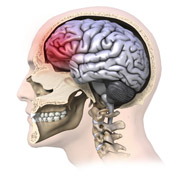Research and Innovation, UNL Office of

Center for Brain, Biology, and Behavior: Faculty Publications
Document Type
Article
Date of this Version
2011
Citation
Nature and Science of Sleep 2011:3 115–123. PMCID: PMC3630966
Abstract
Background: In the context of increasing awareness about the need for assessment of sleep duration in community and clinical settings, the use of questionnaire-based tools may be fraught with reporter bias. Conversely, actigraphy provides objective assessments of sleep patterns. In this study, we aimed to determine the potential discrepancies between parentally-based sleep logs and concurrent actigraphic recordings in children over a one-week period.
Methods: We studied 327 children aged 3–10 years, and included otherwise healthy, nonsnoring children from the community who were reported by their parents to be nonsnorers and had normal polysomnography, habitually-snoring children from the community who completed the same protocol, and children with primary insomnia referred to the sleep clinic for evaluation in the absence of any known psychiatric illness. Actigraphy and parental sleep log were concomitantly recorded during one week.
Results: Sleep logs displayed an average error in sleep onset after bedtime of about 30 minutes (P , 0.01) and of a few minutes before risetime in all groups. Furthermore, subjective parental reports were associated with an overestimated misperception of increased sleep duration of roughly one hour per night independent of group (P , 0.001).
Conclusion: The description of a child’s sleep by the parent appears appropriate as far as symptoms are concerned, but does not result in a correct estimate of sleep onset or duration. We advocate combined parental and actigraphic assessments in the evaluation of sleep complaints, particularly to rule out misperceptions and potentially to aid treatment. Actigraphy provides a more reliable tool than parental reports for assessing sleep in healthy children and in children with sleep problems.
Included in
Behavior and Behavior Mechanisms Commons, Nervous System Commons, Other Analytical, Diagnostic and Therapeutic Techniques and Equipment Commons, Other Neuroscience and Neurobiology Commons, Other Psychiatry and Psychology Commons, Rehabilitation and Therapy Commons, Sports Sciences Commons


Comments
© 2011 Dayyat et al, publisher and licensee Dove Medical Press Ltd. Open Access article.